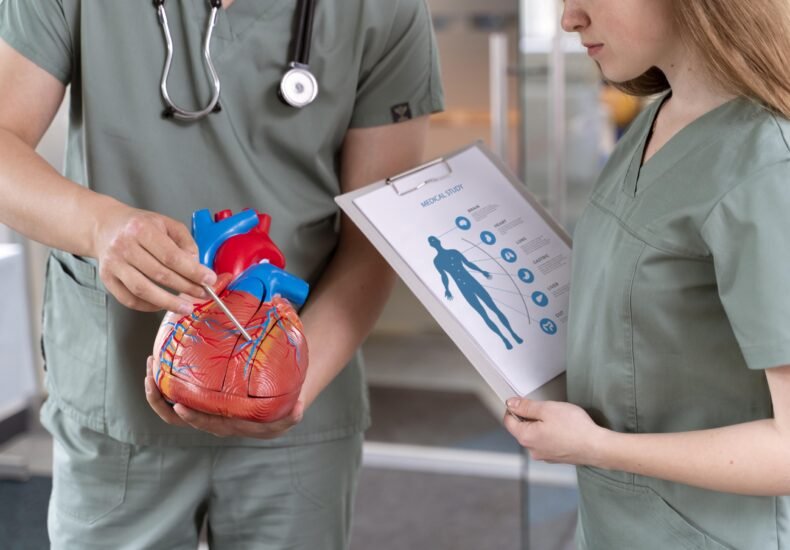
Health education is the strategy to promote health (health promotion) and disease prevention programs. Additionally, by promotion of health, we mean the improvement in the functions of the body and the increase in the ability of the body to adapt to the environment. It also involves well-being, healthy habits, and healthy behaviors. Health education includes activities to make people aware of various diseases, particularly those that are prevalent in a particular region. Moreover, it involves disease prevention strategies.
Examples of Health Education Activities
Following are some health education activities:
- Lectures
- Courses
- Seminars
- Webinars
- Workshops
- Classes
The Importance of Health Education and Preventive Strategies
Health education and preventative programs help community members stay healthy. Moreover, health clinics offer services and programs to educate people about their health.
Health education is “consciously constructed opportunities for learning and involving some form of communication designed to improve health literacy, including improving knowledge and developing life skills, which are conducive to individual and community health,” according to the WHO.
Health education uses various successful strategies to raise health awareness. In our community healthcare facility, medical experts and support workers provide basic health information to patients and their families. Health education promotes the idea that “prevention is better than cure” by informing patients about their health and how to improve it.
Health education and preventative services benefit community education. Our healthcare experts promote excellent health by using effective teaching methods and resources. Our holistic health education covers physical, psychological, social, and spiritual wellness.
Effective health education initiatives affect the community, making people more health-conscious. Key health education and preventative services include:
- Presenting and teaching patients about sexual and reproductive health, illness prevention, general well-being, stress management, and nutrition.
- Special awareness initiatives for diabetic and hypertension patients include techniques to cope with and minimize illness consequences.
- Mental health programs for college students and seniors that include extensive presentations and exercises to improve mental health
- Comprehensive alcohol and drug prevention programs that explain the dangers of addiction Counseling and awareness initiatives for vulnerable children and college students are also included.
- Pregnancy and infant health education for women Health education should advance health promotion and illness prevention programs. This includes overcoming cultural and language gaps and rural health promotion and disease prevention hurdles.
Characteristics of Health Education Strategies
Health education programs and activities should involve the following:
Staff should be properly trained and have experience.
Information should be provided or presented with the help of presentations, slides, projectors, books, videos, etc.
The target population must be involved. For example, if the seminar is about diabetes, then diabetic patients must actively participate.
Activities Involved in Health Education
Communication
Education
Making policies and systems
Examples of Health Education Interventions
The San Luis Valley Area Health Education Center (SLVAHEC) established the SLV N.E.E.D. (Naloxone Education Empowerment Distribution Program), which offered instructional workshops to physicians and community stakeholders on tackling opioid misuse.
The target group may get health education from community health workers (CHWs). The Community Health Workers Toolkit contains examples of how CHWs assist in health education activities.
To remove obstacles to care, health education is also employed in care coordination. One form of care coordinator who provides education to people, families, and communities is a health educator. The Rural Care Coordination Toolkit has further information.
Considerations for Implementation
Activities promoting health should further the program’s overarching objective of health promotion and illness prevention. To achieve cultural competency, materials created for health education programs must be adapted to the target people and suited to their culture. This calls for tackling language and cultural disparities in rural populations as well as possible roadblocks to disease prevention and health promotion.
Frequently Asked Questions
How can you promote health and prevent disease?
- Helping People Who Smoke Quit.
- Increasing Access to Healthy Foods and Physical Activity.
- Preventing Excessive Alcohol Use.
- Promoting Lifestyle Change and Disease Management.
- Promoting Women's Reproductive Health.
- Promoting Clinical Preventive Services.
- Promoting Community Water Fluoridation.
What is the most effective method for the prevention of disease?
Wash hands often. Rinsing with running water, washing with soap, and drying thoroughly is the best strategy to avoid disease spread.
Conclusion
In conclusion, health education stands as a pillar in the prevention of disease and the promotion of a healthier society. By empowering individuals with knowledge and information about various health risks, preventive measures, and healthy practices, health education fosters a proactive approach to personal health management. It enables people to make informed decisions concerning their health, adopt healthier behaviors, and navigate health risks effectively. Health education also plays a pivotal role in breaking the chain of misinformation, reducing stigma, and encouraging early detection and timely intervention, which are crucial in preventing the escalation of diseases.
Moreover, it promotes a communal understanding and approach to health, fostering environments that support healthy lifestyles and choices. When integrated effectively into communities, schools, and healthcare systems, health education becomes a powerful tool that catalyzes positive health outcomes, reduces the burden of disease, and enhances the overall quality of life. Thus, investing in health education is paramount to achieving sustainable health improvement and a resilient society capable of thwarting the challenges posed by various diseases and health conditions.







